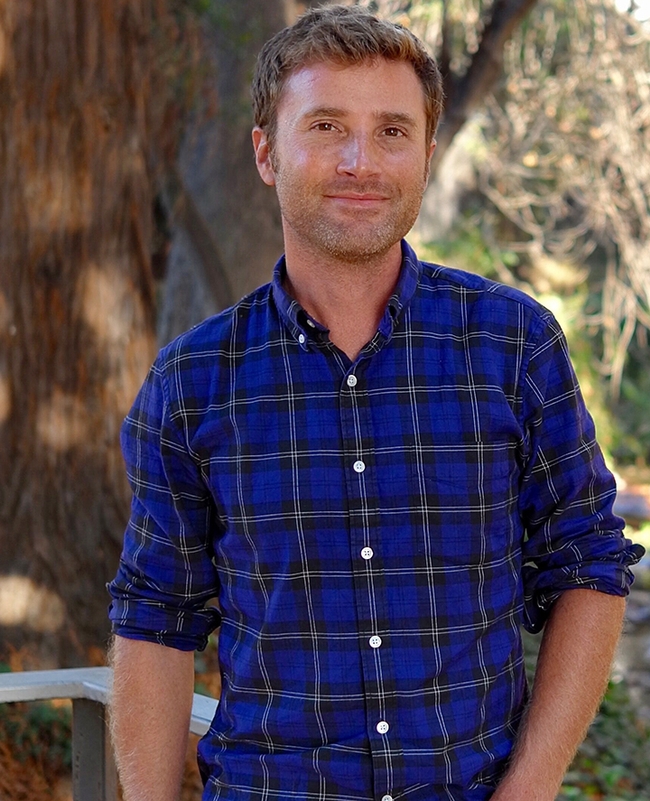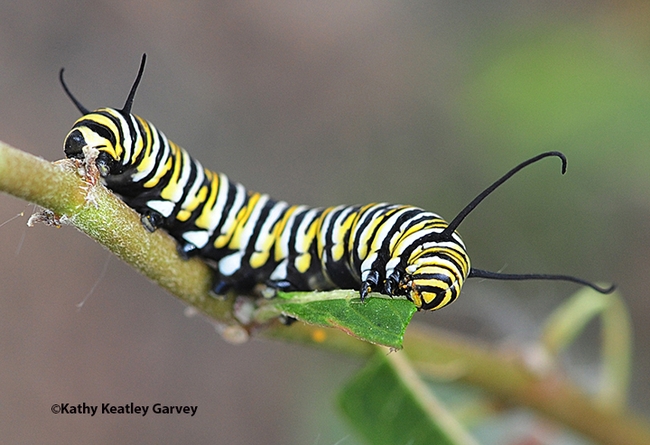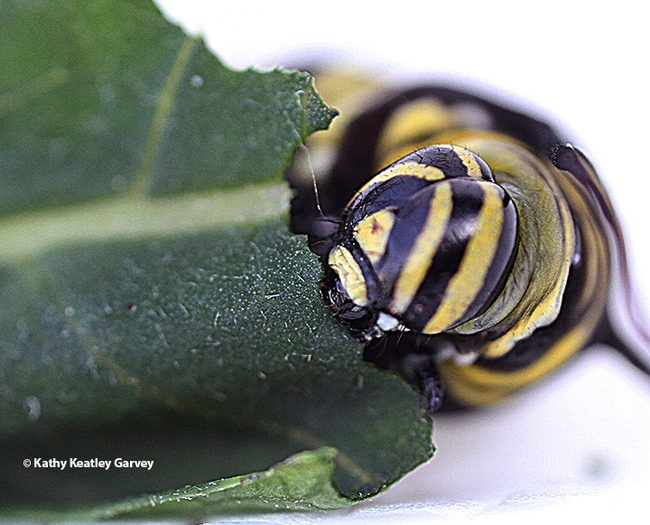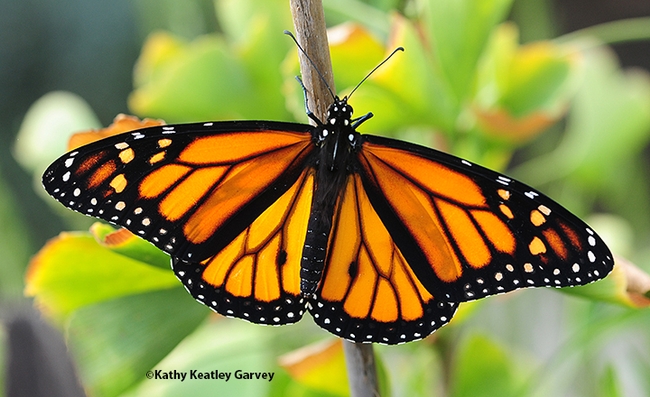
Whiteman, UC Berkeley professor of genetics, genomics, evolution and development, and director of the Essig Museum of Entomology, writes with a passion bestowed on him by his late father, a naturalist. “....he was a used car salesman, and later, a furniture salesman, but in his heart, he was a naturalist.”
The 336-page book is captivating, transparent, and fascinating--an “I-didn't-know-that-tell-me-more!” read.
Take monarchs.
Whiteman recalls a scene from his childhood. He and his father are in a patch of milkweed. His father tears a leaf in half. As "white latex" drips from the leaf, his father tells him: "That's why they call it milkweed. Don't ever eat it. Heart poisons are in that sap.”
The toxins are terpenoids called cardiac glycosides. “One of the principal toxins in the common milkweeds that my dad and I encountered is aspecioside,” Whiteman wrote. "The monarchs obtained these heart poisons during their caterpillar stage. But the caterpillars did something even more extraordinary—they concentrated the toxin to levels even high than those found in the milkweed itself.”
“The butterflies were poisonous, my dad explained, because as caterpillars, they had eaten toxins from the milkweed leaves. The insects then stored the toxins in their bodies all the way through metamorphosis, from a zebra-striped caterpillar to a chrysalis encircled at the top by a golden diadem, to the familiar brightly colored butterfly.”
Whiteman points out that monarch butterflies "evolved to become brightly colored to warn predatory birds and other predators of the bitter and emetic cardiac glycosides within." When a bird eats a monarch, it vomits, associating "the butterfly with danger, just as Pavlov's dogs learned to associate the ring of a bell with food.”
That led Whiteman to the question “How do animals that sequester these toxins, as the monarch does, resist them?”
Whiteman researched cardiac glycosides with evolutionary ecologist Anurag Agrawal of Cornell University, who received his doctorate in population biology in 1999 from UC Davis, studying with major professor Richard "Rick" Karban, Department of Entomology and Nematology.
You'll have to read Chapter 4, "Dogbane and Digitalis," to learn what Whiteman, Agrawal and their colleagues discovered.
All 13 chapters of “Most Delicious Poison” are deliciously intriguing and inviting, from “Deadly Daisies,” “Hijacked Hormones,” “Caffeine and Nicotine” to “Devil's Breath and Silent Death” to “Opicoid Overloads” to “The Spice of Life.” And more.
His father's death in 2017 from a substance use disorder (alcohol) pushed him to write the book. "His long struggle with nature's toxins came to a head just as my collaborators and I uncovered how the monarch butterfly caterpillar resists the deadly toxins made by the milkweed host plant.”
Toxins are why the monarch can migrate thousands of miles to overwintering spots without getting eaten by predatory birds.
Nature's chemicals are not a side show, as Whiteside emphasizes. They're "the main event."
(Editor's Note: The Bohart Museum of Entomology, UC Davis, displayed Whiteman's book at its Nov. 4th open house on monarchs. Whiteman plans to deliver a presentation on the UC Davis campus sometime next spring.)
Attached Images:


